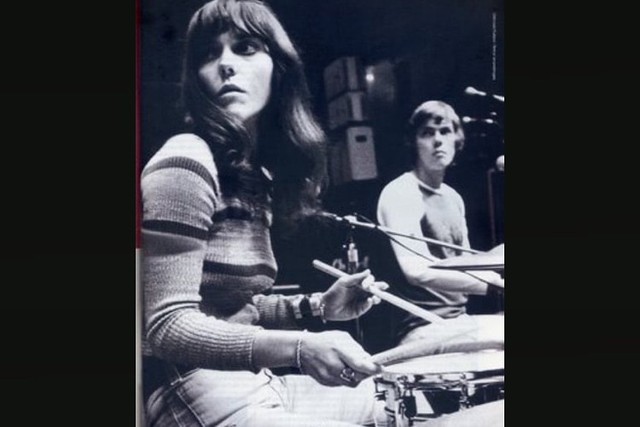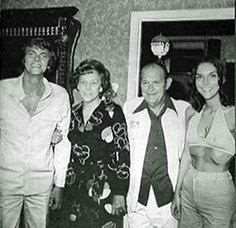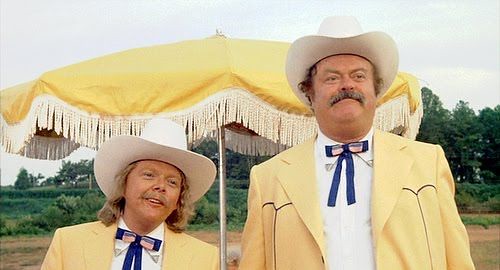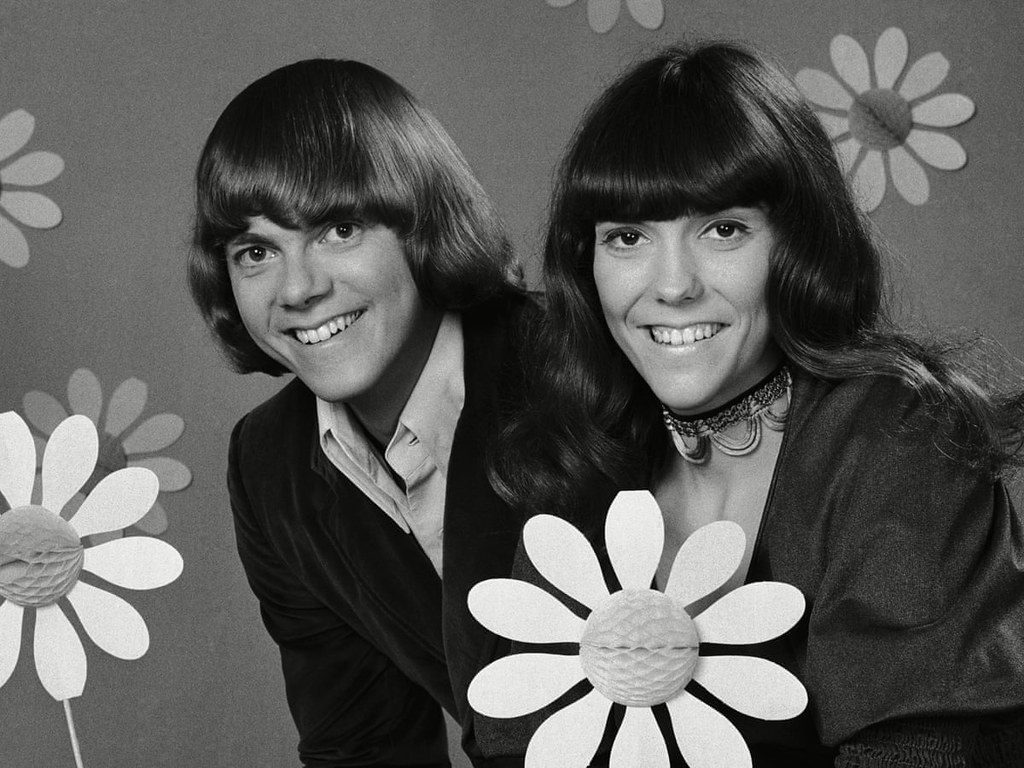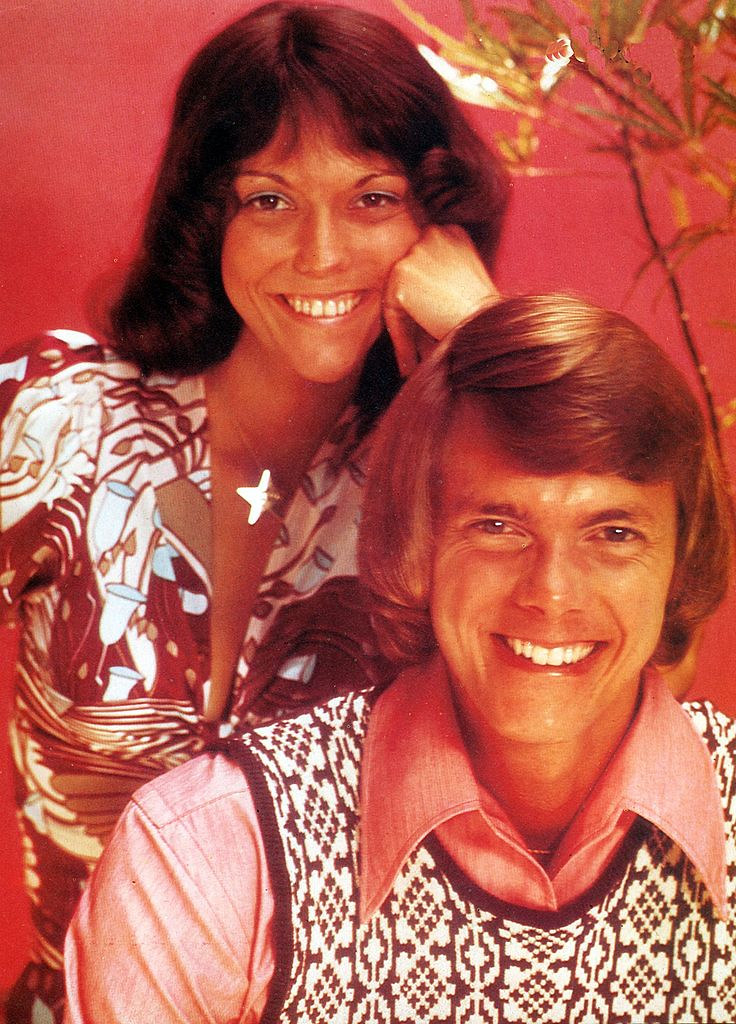Dedicated to Karen, the first woman to make me cry
”Love of beauty is taste. Creation of beauty is art.”, Ralph Waldo Emerson
Yesterday Once More
IT ALL started… the melancholy music, the sense of failure, the addiction, her body dysmorphia, all of this and more powering the most soothing and tragedy-filled contralto of her generation… it all started, and will end, with her brother Richard.
Born in New Haven, CT to Harold Carpenter and Agnes Tatum Carpenter, Richard was the prototypical doted-on Boomer child, the oldest son for whom no expense was spared, no inconvenience too great, for his musical development. Starting with piano, his talent was so obvious (to his mom, at least) that when Richard was 16 his family decided to move across the country to Downey, CA, in support of their son’s music career (and, as Harold joked, to get away from the snow).
Four years after Richard’s birth, Agnes had a daughter, Karen, also a prototypical Boomer child, very sporty and a massive Disney fan. And, in a pattern which would be familiar to Nannerl Mozart, Karen’s education and career took a backseat to her brother’s, her parents obviously favoring Richard in terms of education, opportunities, and contacts.
And it is Karen’s reaction to her parents internalized misogyny and obvious favoritism which became the source of her genius and the seeds of her destruction. And to Richard’s credit, he was his sister’s biggest supporter, shielding Karen from her parent’s resentment at viewing her success as coming at his expense, that is until Richard became lost in demons of his own and could no longer protect her.
Sing…
Sometimes it is hard to find beauty in our civilization. Extremely rare and delicate, beauty can take on many forms, from the joyousness of a Bach cantata to the splash of color in a Monet painting. And one thing which remains constant, at least for the author, is this: beauty is not just being pretty or attractive – it involves melancholy, a hint of what was once possible and no longer is, a sense of loss. Beauty turns longing into wistfulness, passion into rapture, grace into sublimity. Mozart was supreme at evoking emotional nuance in his works, a form of beauty which could be both precious and profound in the same 16-bar stretch (K488 is a favorite example of this, as is K364).
Vocal beauty is even rarer. Hitting the notes can be (largely) trained, but placing the right emotional nuance, one that pains the heart – it’s a skill which truly can’t be taught. Taylor Swift is a good example – a fine voice, even fantastic, has a good ear for material which works for her… and, still, a four-year old will never be brought to tears by the sound of Taylor’s voice.
Karen’s 3-octave contralto was of such a pure tone that no less a personage than Frank Sinatra said she was one of the few singers he would pay to see. Her success was not just the lucky combination of genes and physiology which gave her head, throat, and lungs the most soothing voice of the past 50 years, but it was found her ability to channel her frustrations and pain into her music, making Karen the Emily Dickinson of modern female vocalists.
She’s not the most powerful of singers – sometimes she tries to belt something out in the high ranges and, while she’s doing a good job of it, you can tell it’s not 100% her wheelhouse. But let her go into the low registers, into, as Karen would say, ‘the basement, where the money is’, and that’s where the beauty is found, the melancholic desperation of a brother and sister finding success in exposing their pains, resentments, and frustrations.
For the Carpenter’s are a profoundly unhappy group, this unhappiness… like Dickinson’s… born of damaged family dynamics, a complete lack of support structures, and internalized misogyny born of the society in which she was raised. You can see this in their song selection, you can hear it in Karen’s voice.
You can see it in the family photos.
We’ve Only Just Begun
To his credit, Richard was always supportive of his sister and understood more than anybody (excepting Karen) that her talent was the key to his success. Starting from when she was 15, he included her in all his Los Angeles bands as the drummer, their unique sound evident even when they played before the acid-drenched crowds at Whiskey A GoGo by eschewing rock and roll for the more traditional “standards” style of the Tin Pan Ally era.
Many of the members of his earlier efforts joined Richard and Karen when they officially formed Carpenters in 1969, when Karen and Richard signed with Herb Alpert of A&M records. Their first song selected was the Burt Bacharach penned “(They Long to Be) Close to You”. Upon release in 1970 it raced to #1 on the Billboard Hot 100, staying there for a month.
Oddly enough, this first hit did not move Richard or Karen themselves into the limelight. At least not until the next song, discovered when Richard, sitting at home watching TV, heard a commercial ditty for Crocker National Bank. Excited, he found out who the songwriters were… a nobody duo from A&M, Paul Williams and Roger Nichols, who let Richard know that, yes, the song was available for licensing. Williams thought Richard was crazy, dismissing the song as a silly wedding tune, noting later that when Richard called him, In-A-Gadda-Da-Vita was the #1 album, his song being a completely opposite sound than what was currently selling.
We’ve Only Just Begun changed the direction of not only Richard and Karen’s lives, but also of Williams (who also wrote “Rainbow Connection” and Three Dog Night’s “An Old Fashioned Love Song”). It cemented the Carpenters as the rulers of the “easy listening” firmament, won them three Grammy awards (a bigger deal then than now), but it also established Karen as the “star” of the duo, her presence increasingly overshadowing Richard. To quote Williams:
(Paul Williams (the shorter gentleman) in 1977’s finest film. Do not @ me, you know I’m right.)
Top of the World
For the next 3 years, Richard and Karen released hit after hit, all while their music was largely dismissed by the larger rock and roll establishment as being wimpy, saccharine, the antithesis of the prevailing musical genre of the day. But it was the 1970s, an era where Bach, Coca-Cola, and Led Zeppelin could sell millions of records in the same year, and despite the critics there was plenty of room for a brother/sister combo who sang melancholy standards.
It was in this period that Karen came into her full powers as a vocalist. Her work in Superstar, Yesterday Once More, Goodbye to Love, and more, while dismissed by the critics, was lauded by her fellow vocalists who understood they were seeing a generational talent. People like Leon Russell, Jann Arden, Paul McCartney, Olivia Newton-John, John Lennon, more all had praise for Karen, but my favorite is from Paul Williams:
Sold out tours. Appearances on Carson. Constant appearances on the Billboard Top 10. Kasey Kasem spinning their records every week. The relatively recent fame machine descended upon Karen and Richard, and they appeared in AM drive-time radio interviews, Good Morning America, hell, even the Carol Burnett show.
And they paid a price.
Hurting Each Other
It is unknown when Karen’s body dysmorphia started: many of the drugs and techniques used by 1960s and 1970s pop stars… hell, 1960s and 1970s housewives… to stay thin would be considered abuse today, and Karen would have been no different. The first known incident of Karen’s desire to control her weight was when she was 17 and overheard a record executive call her 140-pound frame “chubby”. Mortified, she immediately lost 20 pounds and she never approached 140 again.
But regardless of when it started, it was surely compounded by the bizarre situation she found herself in: increasingly responsible for the success of the family fortunes (her earnings largely controlled by Richard and her parents) but resented by those very same parents, especially her mother, for overshadowing Richard. Meanwhile, Richard still needed her to help him be a success so he can prove himself in the eyes of those very parents who blamed her for his (sung) songs not being any good. Karen was also constrained by her upbringing and expectations, continuing to live in her parent’s home until late 1972, two years after winning her first Grammy award.
Karen preferred to play the drums, but her singing duties took front and center and she was pressured to stop playing the drums and come out in front of the audience, especially once TV appearances became common. For a shy woman with body dysmorphia, this was surely a triggering event, perhaps the triggering event, for the anorexia which developed in the early 1970s.
And Richard? He was learning that… well… he was learning that he wasn’t the front-man prodigy he was raised to be. Useless as a lead singer, Richard had neither presence or range. He missed notes. His voice was strained. He sounded like a 1963-era Beach Boy wannabe. He made up for his weaknesses by overproduction, song gimmicks, and doing a fair number of upbeat covers written by people not upset that it was the ‘other’ Carpenter who was going to sing their song (like “Fun, Fun, Fun”). Trust me, many things may be hazy about the 1970s but you can be assured that Burt Bacharach and Paul Williams were not writing songs with Richard Carpenter’s voice in mind.
Richard’s strengths were in arranging, production (at times, though he could be heavy-handed especially when it was his work) and in recognizing that his sister was the meal ticket. But Richard couldn’t escape the fact that it was his sister who was having his recognition, the fame and adoration he was raised to believe was his God-given right, given enough work. Richard, sitting silently while she was chatted up by Merv Griffin, Mike Douglas, and Johnny Carson for years, eventually fell into a 5-year quaalude addiction which corresponded with the end of the Carpenter’s productive years.
Rainy Days and Mondays
All told, by 1976 the peak was over. Karen and Richard still toured, still made albums, but the country which once found comfort in Karen’s voice was looking for more materialistic, more optimistic means of expression. Disco, born of the Philly Soul aesthetic, was starting to rule the pop charts, cocaine and cocaine energy was becoming a force in movies and music culture. Boomers began to shed the anti-materialism dialectic quite rapidly, becoming the “Me Generation” no later than 1975 and the “Yuppies” of 1980, and the futuristic optimism of Star Wars was far more appealing than Karen’s internal troubles.
Even to Richard, who… still dependent upon drugs and still favored by his mother… took it upon himself to write, compose, and produce his magnum opus, 1977’s Passage, an experimental album which had, as its featured single, a song inspired by UFO’s and Richard’s fascination with a band named after the alien in The Day The Earth Stood Still, Klaatu. The only good things about this album is that (1) Richard doesn’t sing, and (2) Trainwreckords did a fantastic review of this album.
Karen’s dieting had transformed into a battle with anorexia nervosa by 1973, with audiences gasping at her gaunt appearance 2 years later. Originally presumed to be fighting a battle with cancer, the eventually-diagnosed condition – anorexia – was too new for treatment options to have been developed, much less approved. Finally checking into Cedar-Sinai in Los Angeles in 1975, she spent 5 days in treatment with their European tour being canceled.
The immediate pressure off her for the first time in over a decade, Karen slept 12-14 hours a day, every day, for months.
Then there were the TV shows. 1976’s The Carpenters First Television Special (starring Victor Borgia and John Denver) is a standard 1970s variety show filled with racist caricatures, bad comedy skits (including a Hee-Haw based skit starring John Denver and Richard), with Karen’s singing (check out her fantastic live Superstar/Rainy Days medley @ 28:30-32:00 (ish), as well as the final medley starting at 41:00) being the only reason to watch it. Richard did not want to do this, but Karen loved the genre and pushed them to do it. And, if you watch it, you can tell her enthusiasm for venture this vastly exceeded his.
Worse still was The Carpenters Space Encounters, a televised 1978 variety show featuring Suzanne Somers in comedy skits while Karen crooned to John Davidson. TCSE just may well be the most painful relic of the 1970s, exceeding Star Wars’ own Holiday Special or that time Cher danced with Donny Osmond while lip-synching to her own covers of various Stevie Wonder songs, though Karen’s rendition of Janis Joplin’s Little Girl Blue @ 27:50 in is the one true Karen moment in an otherwise steaming pile of 1970s shlock.
If you watch the above, you are watching a family barely keeping it together, both of them controlled by their own internal demons as Richard was deeply into his barbiturate addiction and Karen’s anorexia was painfully obvious to anyone knowing what the condition looks like… which wasn’t many people in 1978.
This was the year they stopped touring, Richard’s barbiturate addiction impacting his memory and his playing, Karen’s anorexia and resentment over her family issues coming to the fore in their lives, if not their official photographs:
Goodbye to Love
In 1980, Karen married a hustler named Tom Burris, who, by all accounts and actions, was after her money. And if you’ve read through all this still thinking that her family gave Karen full and complete agency over her wealth, then I need to up my game. Tom did drain Karen of her available cash assets, but her financial advisors (and Richard and her parents) refused to cash in any stocks/real estate/investments for Tom’s benefit. Tom left after 9 months, with Karen filing for divorce 14 months after the wedding.
Richard broke free of his addiction in 1979, 1980 – checked himself into rehab and by all accounts it worked. Karen was a harder nut to crack. Resentful that her voice still seemed to be Richard’s to command, still upset over her mother’s favoritism (which never stopped, even when it was obvious (like, 1970-obvious) that Karen was the money machine), Karen decided to record a solo album in the early 1980s, a decision which created a massive fight in the family given that Karen needed $250,000 to finance this and had no money after the Tom Burris fiasco. But… until she succeeded on her own, Karen felt that she had no control of her life, voice, and career.
However, society always allowed her the agency to control her weight.
One thing which people inexperienced with anorexia don’t understand is that the very act of refusing food is the reward, not the weight itself. And, even more subtly, when you starve your body you are also starving your brain. So your brain becomes more… inefficient, for want of a better word… causing the sufferer to try to be in even more control. This makes anorexia one of the rare psychological diseases where the physiological impacts of the psychological condition (exhaustion, constant pain from daily activities like sitting, etc, all emanating from the starvation)) also require control, which itself manifests in an acceleration of the psychological condition.
I can imagine it now…
God, I can’t wear this top, Mom will ask questions… here, let me put a jacket over my shoulders. I hope the chairs will be padded. Dammit, they’re going to want me to eat and I’m already so full… plus, I have that Good Morning America appearance Tuesday. And my constipation is making me so bloated, time for another Ex-Lax.
If you can understand how one can hold two contradictory truths in your head… for example (1) that you are overweight, and, (2) you need to hide the effects of your malnourishment from your loved ones… then you may understand anorexia.
Or, to be honest, people.
Karen never released her album, being persuaded by Herb Alpert of A&M Records that it was not up to standards. Of course, Karen Carpenter was released in 1996 and while none of the songs rose to the heights of their 1970s work, they offered a glimpse of what Karen may have sounded like later in her career had she worked with differing songwriters and arrangers than Richard.
You can hear it in its entirety on this YouTube playlist:
Superstar
Karen passed away at her parent’s home on February 4th, 1983. Ipapec, a common drug taken to induce vomiting, was found in her system and poisoning was ruled the cause of death. Her body, weighing less than 80 pounds, was found by Agnes Carpenter, Karen’s mother. Her death hit Richard hard as their (now) final studio album was scheduled for release in March 1983.
If Agnes Carpenter didn’t understand the centrality of Karen to her son’s success, she got her nose ground into this reality for the rest of her life as Richard effectively went into a 25-year funk, doing minor composing/production/arranging work, releasing a couple of albums and singles which disappeared without a sight. His biggest contribution to the culture was the Dusty Springfield song Something In Your Eyes a rather typical 1980s power pop tune that showed that Richard still had a good ear of matching artist to song – Dusty does a quality job delivering this rather standard material.
But Karen may have elevated the same material to art. She did so for a bank commercial, for God’s sake.
Richard, playing Bach but in the wrong manner, married his cousin Mary Rudolph… a woman cousin by marriage, not by genes, to be fair… in 1984, Mary eventually having five children with Richard. Richard puttered around until 2008 when he announced he was returning to the music business. So now he goes on the occasional concert tour, does more production and arranging work, but has largely settled into his role as the curator and archivist of Karen’s memory, doing more benefit concerts, documentaries, website (last updated in 2008, wtf Richard?) and YouTube channels. Today, Richard comes across as that nice guy who came across the other side of a major life issue via the Grace of Jesus, but he also comes across as a little grifty. It’s in his eyes and I can’t explain it.
Their reputation was/is slow to rehabilitate. Oh, those in the know, artists like Madonna, Beyonce, Dionne Warwick, Billie Eilish, hell even Sonic Youth (?) have praised Karen’s work. There are an increasing number of articles which have been published in the last decade, hell, apparently The Times of London did a Carpenters retrospective just yesterday (thanks for stepping on my toes, assholes. Just who the Hell do you think you are, Times of London??? ![]() ).
).
Fortunately, unlike Jenny Lind, we don’t just have the second-hand narratives of those who saw her, we can hear her ourselves, hear Karen as she descends, in her mind’s eye likely in her parent’s home, down the basement stairs to find the Pain which created the Beauty inherent to her Art.

